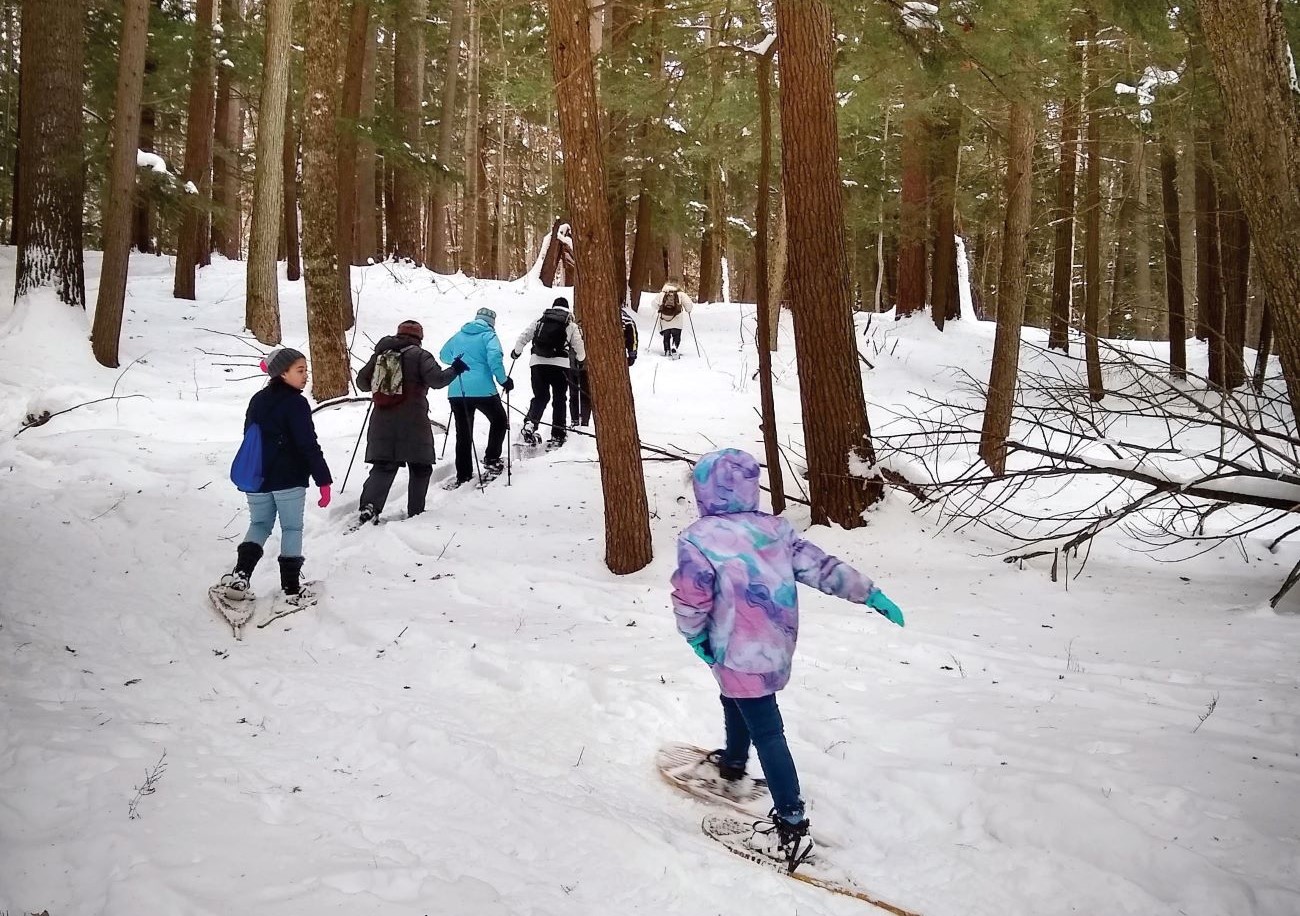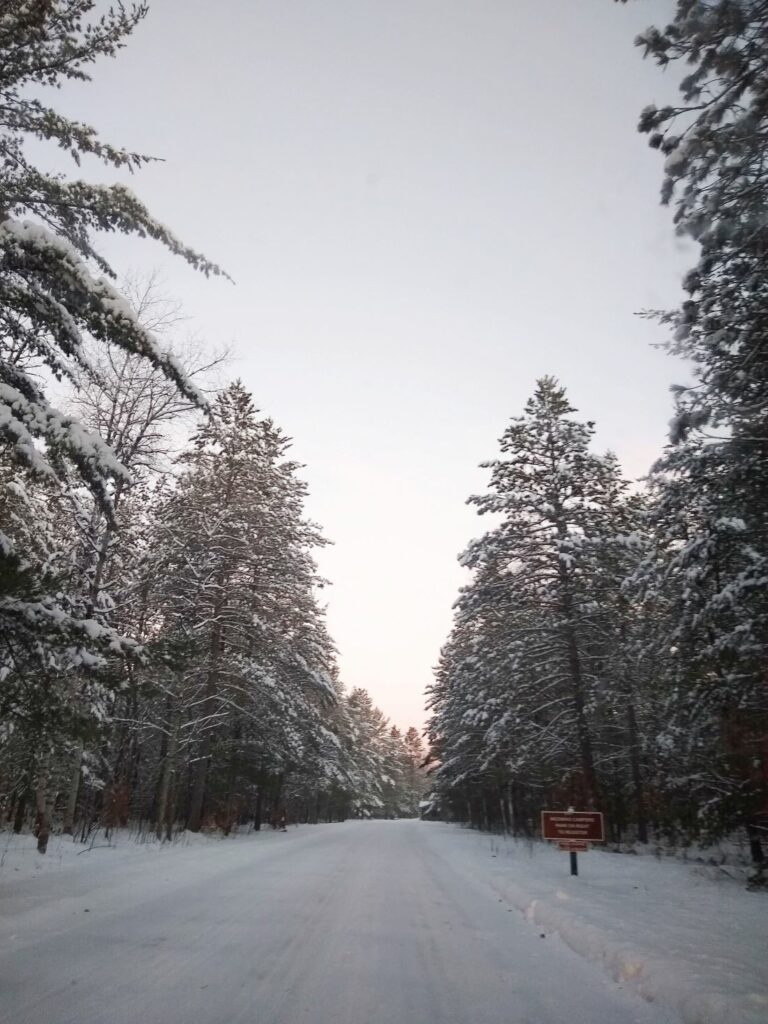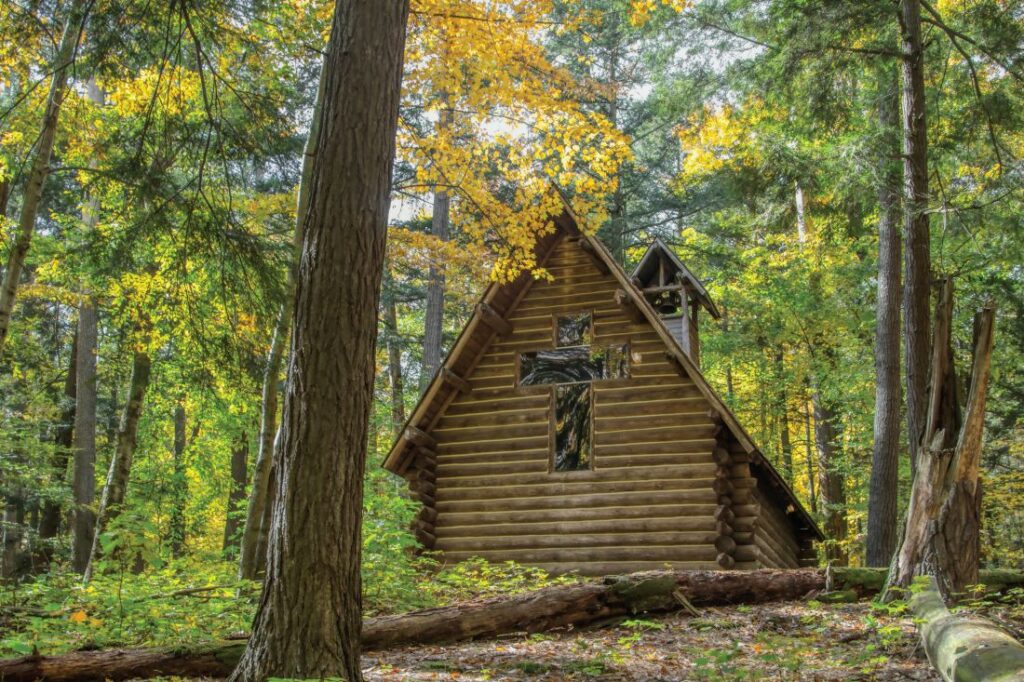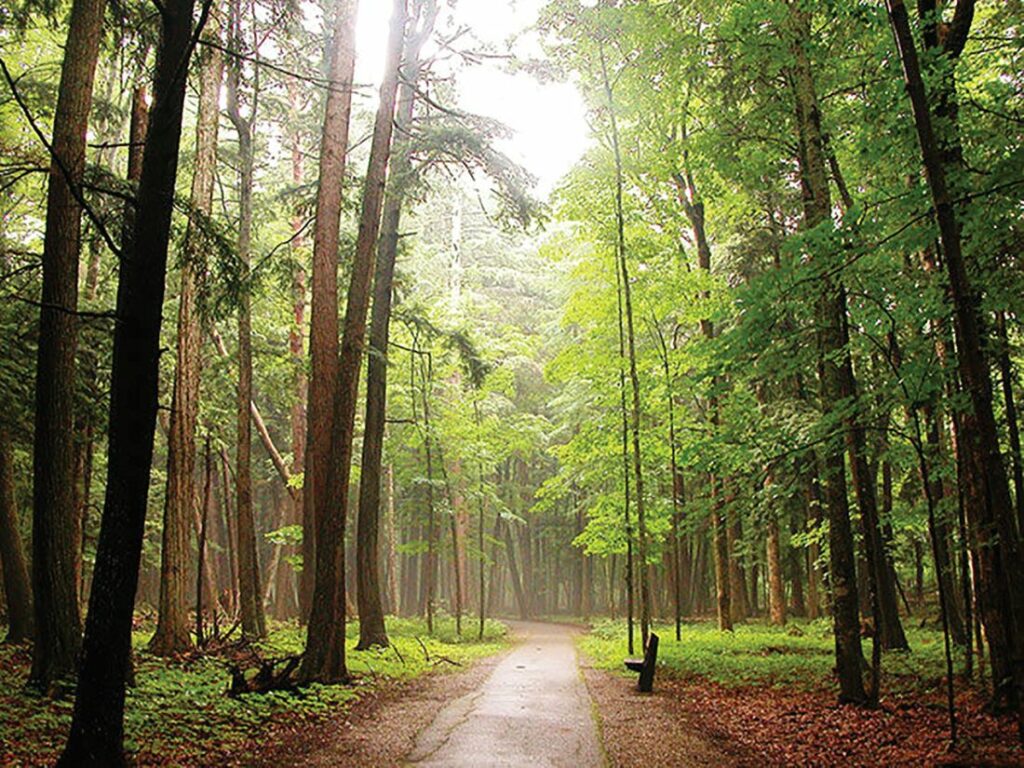By Yvette Pecha
Before being known for automobiles, Michigan was a primary hub in the logging industry. In fact, it was the nation’s leading lumber-producing state from 1860 until 1910. Logging—particularly that of pine trees—played a vital role in developing the country, but it devastated the landscape. It is estimated that less than 1% of the old growth forests that were here when European settlers arrived remain in the eastern U.S. However, there are still places where you can go and see the forest as those settlers did—majestic, towering, and seemingly infinite—and one of them happens to be in Grayling.
Hartwick Pines State Park features roughly 49 acres of old growth forest, which is the largest stand in the Lower Peninsula. Hillary Pine, the park’s historian, says it consists primarily of white/red pine and eastern hemlock trees that are anywhere from 350 to 425 years old. With heights of over 160 feet, the trees are a historic spectacle that have been drawing sightseers for almost 100 years. “We have a lot of generational visitors,” Pine said. “People who used to come here with their grandparents are now bringing grandkids of their own.” A question Pine hears a lot is “Where’s the big tree?”—a reference to the once tallest tree in the forest, the Monarch, which was a 155-foot-tall white pine that people earnestly hugged for photo ops. Sadly, the Monarch perished after a windstorm, but there are plenty of other old, giant trees waiting to have their pictures taken—and they have Karen Hartwick to thank for it.
Hartwick bought 8,000 acres of property that included the grove of old growth in 1927. She then donated the land to the state with the stipulation that it be a memorial to her late husband, Edward Hartwick, a lumberman who died of illness in World War I. The contract also dictated that no more trees would be cut, there would be a road to the park, a structure would be built in Edward’s memory, and a logging museum would be established. The park opened in 1928 and, with time, met all of Karen’s wishes. There is a museum that depicts life in a late 1800s logging camp, and the Hartwick Pines Memorial Building, a rustic, lodge-style building, pays tribute to Edward.
Other buildings on the property include a chapel that can be rented out for weddings and the Visitor’s Center—which is where you’ll find longtime park interpreter Craig Kasmer, who leads presentations and trail tours. Kasmer, who—like his parents before him—once hugged the Monarch, echoes Pine’s statement that the park is about family connection. He says one of his favorite things is meeting visitors who tell him they remember him from a tour they took when they were kids—many of them particularly remember him saying that not everything is a pine cone. “All conifers have cones, but pine cones are only on pine trees. There are also hemlock cones, spruce cones, fir cones, etc.,” he said. Kasmer says it’s important to make this distinction and for people to know the proper names of things. “If you know the name of something, you care for it more. You learn the name of that flower, the name of that bird, and you like it more and want to know more about it.” he said.
The park also features a 21-mile network of all-season trails perfect for walking, biking, cross-country skiing, and snowshoeing. Pine says the 1.25-mile Old Growth Forest Trail, which is paved and fully accessible, is the most popular, as visitors get to see the old growth trees up close. Other popular activities include birding (the evening grosbeak is one rare bird that can be seen); viewing other wildlife such as bobcats, deer, turkeys, otters, minks, foxes, and the occasional bear; and fishing, canoeing, or kayaking in the four lakes onsite. The two biggest of which—Bright and Glory—are named after Karen Hartwick’s father’s log-hauling oxen team. The grounds also house a 100-site seasonal campground.
Whatever you come to the park for, prepare to be awed. Pine, who has been employed at Hartwick Pines for seven years, says she’s still amazed. “As a historian—knowing the effect that the logging era had on Michigan’s forest and the widespread devastation from cutting and fire—the fact that this small section of old growth remained is truly remarkable,” she said. “It’s a wonderful pocket where you can go see what most of northern Michigan used to look like.”









